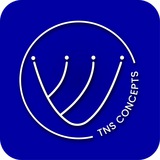Join The Most Awaited Session of the year... Last 20 Day Prep Strategy for MH SET Exam.
https://www.youtube.com/live/UaqqjeXPxto?si=sA7gj1OJkDYQdeFP
https://www.youtube.com/live/UaqqjeXPxto?si=sA7gj1OJkDYQdeFP
YouTube
Last 20 Days Strategy for Maharashtra SET 2024 Exam | Don't Do This Mistakes in MH SET 2024 Exam
Last 20 Days Strategy for Maharashtra SET 2024 Exam | Don't Do This Mistakes in MH SET 2024 Exam.
🔬 Welcome to The Nilesh Soni YouTube Channel! Prepare for CSIR NET Life Science, SET, GATE, B. Sc., M. Sc., IIT JAM, Assistant Professor exams like never before!…
🔬 Welcome to The Nilesh Soni YouTube Channel! Prepare for CSIR NET Life Science, SET, GATE, B. Sc., M. Sc., IIT JAM, Assistant Professor exams like never before!…
Biochemical events of mast cell activation.
Cross-linking of bound IgE by antigen activates protein tyrosine kinases (Syk and Lyn), which in turn cause activation of a MAP kinase cascade and phospholipase Cγ (PLCγ).
PLCγ catalyzes the release of IP3 and DAG from membrane PIP2.
IP3 causes release of intracellular calcium from the endoplasmic reticulum. Calcium and DAG activate PKC, which phosphorylates substrates such as myosin light chain protein and thereby leads to the degradation and release of preformed mediators.
Calcium and MAP kinases combine to activate the enzyme cytosolic phospholipase A2 (PLA2), which initiates the synthesis of lipid mediators, including prostaglandin D2 (PGD2) and leukotriene C4 (LTC4).
https://www.instagram.com/p/C4zb_OtRd8T/?utm_source=ig_web_copy_link&igsh=MzRlODBiNWFlZA==
Cross-linking of bound IgE by antigen activates protein tyrosine kinases (Syk and Lyn), which in turn cause activation of a MAP kinase cascade and phospholipase Cγ (PLCγ).
PLCγ catalyzes the release of IP3 and DAG from membrane PIP2.
IP3 causes release of intracellular calcium from the endoplasmic reticulum. Calcium and DAG activate PKC, which phosphorylates substrates such as myosin light chain protein and thereby leads to the degradation and release of preformed mediators.
Calcium and MAP kinases combine to activate the enzyme cytosolic phospholipase A2 (PLA2), which initiates the synthesis of lipid mediators, including prostaglandin D2 (PGD2) and leukotriene C4 (LTC4).
https://www.instagram.com/p/C4zb_OtRd8T/?utm_source=ig_web_copy_link&igsh=MzRlODBiNWFlZA==
https://youtu.be/YH6WjGXuFag
Hello all, as you know we are working hard for you all.
The evolution series is going to be the most amazing series for you all.
So do watch and share with friends
Hello all, as you know we are working hard for you all.
The evolution series is going to be the most amazing series for you all.
So do watch and share with friends
YouTube
Evidence of Evolution For CSIR NET Life Science Part-2 | Importance of Fossil Records | L-11
In Evidence of Evolution For CSIR NET Life Science Part-2 will learn the Importance of Fossil Records, How Fossil Records help us in study or research, Does the fossil record support the idea that evolution occurs?
🔬 Welcome to The Nilesh Soni YouTube Channel!…
🔬 Welcome to The Nilesh Soni YouTube Channel!…
Showing Extrinsic and Intrinsic Pathway of apoptosis.
.
.
.
.
Follow us for more @tnsconcepts
.
.
.
.
.
#apoptosis #mitochondria #DNA #Nucleus #Cell #receptor #ligand #celldeath #immunology #immune #mito
https://www.instagram.com/p/C44hCpfrg1W/?igsh=MWdscnJ5OWo5d21jYQ==
.
.
.
.
Follow us for more @tnsconcepts
.
.
.
.
.
#apoptosis #mitochondria #DNA #Nucleus #Cell #receptor #ligand #celldeath #immunology #immune #mito
https://www.instagram.com/p/C44hCpfrg1W/?igsh=MWdscnJ5OWo5d21jYQ==
Join the special session of CSIR NET Evolution Most Probable & Most Expected Questions of Neo Darwinism & Modern Synthetic Theory, Evidence of Evolution ( Biographical Evidences & Fossil Records of evolution)
https://www.youtube.com/live/KqT39ge6jss?si=UM2FSl-jGnhmpE0E
https://www.youtube.com/live/KqT39ge6jss?si=UM2FSl-jGnhmpE0E
YouTube
CSIR NET Evolution Most Expected Questions | Modern Synthetic Theory | Evidence of Evolution
In this lecture will discuss the CSIR NET evolution most expected questions in CSIR NET Life Science 2024. Join our video session for the most expected, repeated, and important questions of Modern Synthetic Theory | Evidence of Evolution! Let's conquer CSIR…
Are going to attempt MH SET 2024 exam then you should watch this before appearing the exam : https://www.youtube.com/watch?v=Q24J4xUhb44
YouTube
Appearing MH SET Life Science 2024? Then Don't Miss This | MH SET 2024 Preparation Strategy
Appearing MH SET Life Science 2024? Then Don't Miss This video, specially design for MH SET Life Science 2024 Aspirants. Must go through this video before Appearing MH SET Life Science 2024, this will change your exam point of view & boost confidence.
🔬…
🔬…
The Cori cycle (also known as the Lactic acid cycle), named after its discoverers, Carl Ferdinand Cori and Gerty Cori, refers to the metabolic pathway in which lactate produced by anaerobic glycolysis in the muscles moves to the liver and is converted to glucose, which then returns to the muscles and is metabolized back to lactate.
